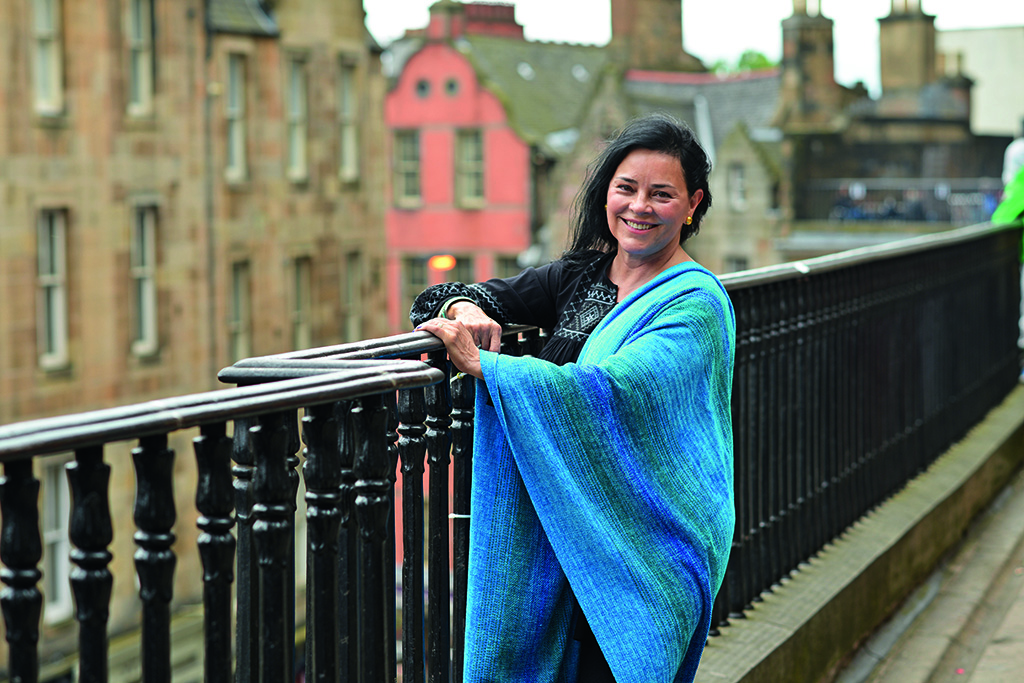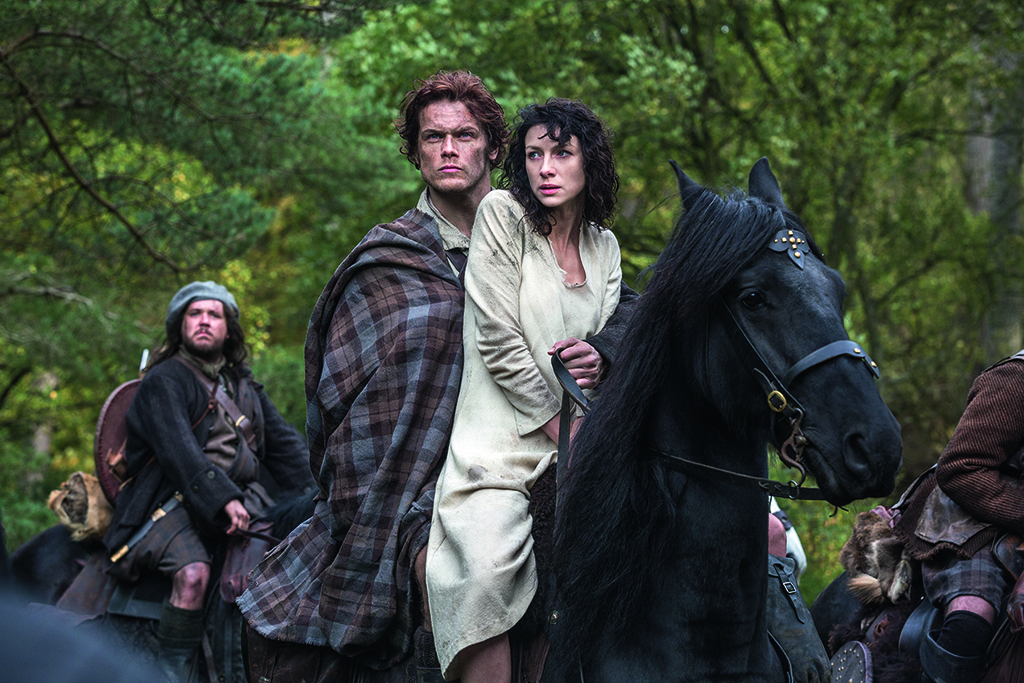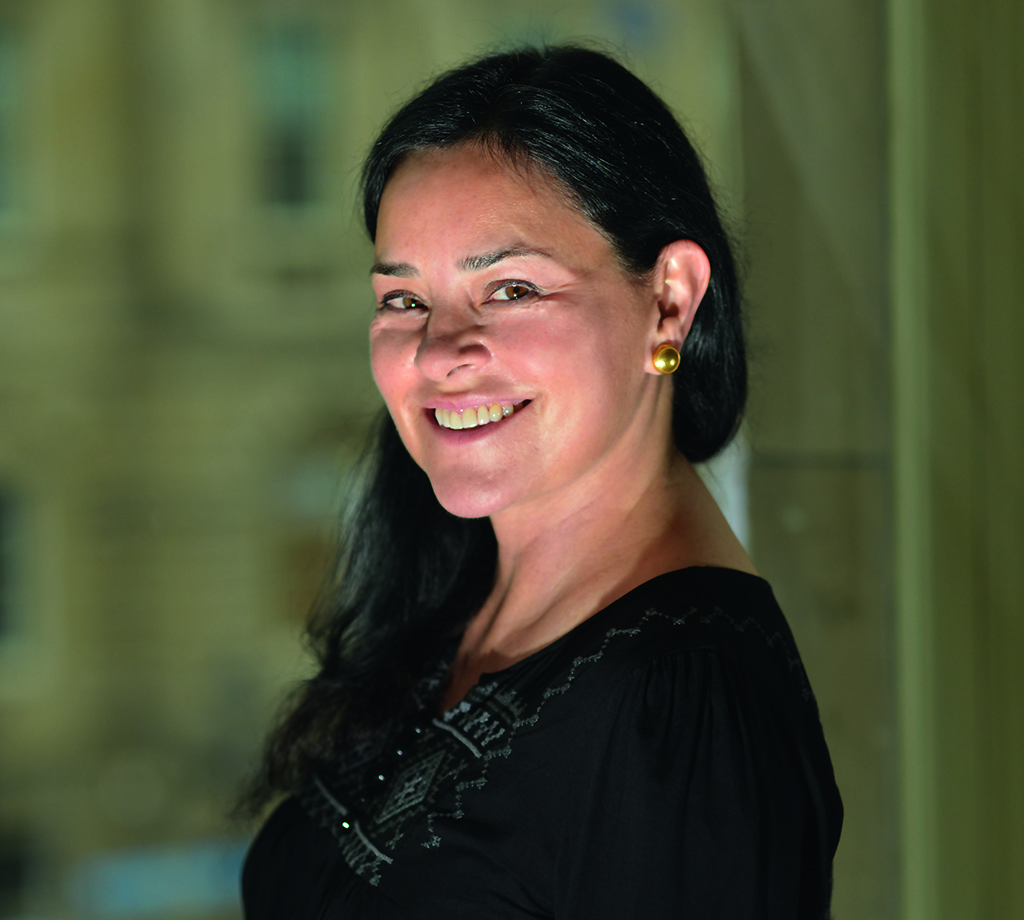
Outlander creator Diana Gabaldon has the write stuff
For millions of television viewers across the world, the exploits of a Scotsman are appointment watching.
We’re talking about Outlander – the TV series based on the works of Diana Gabaldon, featuring an English nurse who falls through time to the aftermath of Culloden, where she meets the dashing Jamie Fraser (Heughan).
In 2014, the first series on the show had launched in America on the Starz Network, propelling Scots actor Sam Heughan to international fame. Scottish Field spoke with Diana, about the initial success of the series, in 2014, and we present this archive interview.
For a certain type of person, Game of Thrones has become a terrifying obsession. If they’re not talking about the television series over the water cooler at work or posting about it on Facebook, they are naming their children after key characters such as Theon and Tyrion. But now that series four has come to an end, what will they watch instead?
This is where Diana Gabaldon can help. An American scientist-turned-writer, her eight-book Outlander series has been developed into a glossy drama by the Starz channel. Unusually for an Arizona-based author, she chose to set the story in Scotland. When she began writing it, she had never even been here. Yet it is now poised to bring the landscape, scenery and accents of the Highlands to a potentially enormous worldwide audience desperately seeking its next fix of exuberant medieval fantasy.

Outlander creator Diana Gabaldon (Photo: Angus Blackburn)
Outlander was published in 1991 and since then Gabaldon has been here, she reckons, more than 20 times. ‘I love Scotland,’ she says, ‘though to be honest, I don’t know anyone who doesn’t. I was very moved, on seeing it for the first time; it was in fact very much as I’d seen it through my research.’
Since then she has been ‘adopted’ by the clans Fraser and MacKenzie (not distant relatives – they are the names of the two main characters in the series). A popular visitor to the Edinburgh International Book Festival, she returned last month for her third event, promoting the latest in the Outlander saga, Written in My Own Heart’s Blood. It is her second trip this year; she has already been for a state visit to ‘Outlanderworld’, the vast converted warehouse in Cumbernauld where the interior scenes for the series were shot.
Outlander had been optioned for television before, but this is the first time it has actually made the leap on to the screen, having just begun transmission in the States. Gabaldon has watched with a mixture of delight and astonishment as the product of her imagination – first written as a practice run when she was an academic editing a scientific journal and inspired by a young man in a kilt she remembered from an old episode of Doctor Who (Frazer Hines as Jamie McCrimmon) – has turned into a multi-million-dollar televisual extravaganza in which real people speak her words.
Having lived privately with these characters for so long, how is she finding this new situation? ‘Naturally the show isn’t a match for what’s in my head,’ she says. ‘Lacking 3-D printers capable of producing human beings and a good telepathic interface, such a thing isn’t possible. But it is a truly great show and a good adaptation of my books.’
She has not, as some authors do, found the relocation of her precious darlings from her imagination to the flat-screen TV traumatic. ‘I have no trouble carrying separate visions of a story. For me, film and text are entities unto themselves. Given the limitations and advantages of the different media, they ideally are different.’

Outlander has been a TV success since 2014 (Photo: Starz)
The process may, she admits, have been made easier by the casting of young and relatively unknown actors as Jamie (Sam Heughan, a chisel-jawed Scot who has been in Doctors, River City and several small films) and Claire (Caitriona Balfe, a lush Irish actress who has yet to make much impact in the UK).
This compares favourably to Game of Thrones, where seeing Sean Bean in Eddard Stark’s fur-trimmed cloak rather than Sharpe’s sprayed-on britches confused those of us who weren’t paying full attention. Here, Balfe gets a chance to play the nurse who catapults backwards from the Second World War to the Jacobite rebellion, and Heughan the strapping young lad caught up in the action, without anyone wondering what happened to their character in Rebus.
And this is just how Gabaldon likes it. ‘I would have been upset had they cast Tom Cruise as Jamie Fraser,’ she says, diplomatically not mentioning that he is probably too short to carry off the kilt. ‘I’m very much relieved that the leads aren’t well-known stars with a lot of artistic baggage.
‘They had to be young: they’re playing people who are 22 and 27. Both Sam and Caitriona are wonderful actors and a great fit for the roles they play. Their magic is to embody a character, and if they can do that, the specifics of physical appearance are not all that important.’
Doune Castle stands in for Gabaldon’s fictional Castle Leoch. Other locations have been kept under wraps, but are thought to include Culross, Falkland and Loch Rannoch. It’s one of the biggest productions ever to be shot in Scotland: two seasons of eight episodes each, with 250 cast and crew and a budget believed to be over £50 million.
Gabaldon collaborates with a series of native Gaelic speakers when writing the books, so the cast has had a Gaelic coach to make sure their pronunciation is spot on. Over the years the author has found herself working with Gaels from the Hebrides and the diaspora who either ‘kindly volunteered their aid or whom I have
met fortuitously’.
‘I send one of them a sentence or two of dialogue in English and ask, how would you say that in Gaelic?’ she explains. ‘I usually get back questions about the relationship between the conversants, the social context of the conversation, and so on. And then they supply a very sophisticated and properly idiomatic translation, which gives the poor typesetters and proofreaders fits.’

Author Diana Gabaldon (Photo: Angus Blackburn)
It’s this painstaking, pinpoint accuracy set in a context of wildly imaginative time travel and other genre-ignoring plotting that makes Gabaldon stand out in a crowded market – and which has no doubt attracted TV executives looking for the next George RR Martin. It can, however, leave Waterstones et al a little confused.
Two decades after first being published, the author is resigned to what she calls ‘the peculiarly indescribable nature of my books’.
‘I have so far seen them sold – with evident success – as literature, fiction, historical fiction, historical non-fiction (really!), science fiction, fantasy, mystery, romance, gay and lesbian fiction, military history (really) and horror.
‘I once beat both George RR Martin and Stephen King for a Quill Award in the science fiction-fantasy-horror category.’
Given that the series, which has sold over 18 million copies, is published in 26 countries, in 23 languages, and has expanded to include The Outlandish Companion (details on the settings, background, characters, research and writing of the novels), a sub-series featuring minor character Lord John Grey and a graphic novel, set in what she calls ‘the Outlander universe’, written from the point of view of Jamie Fraser, this does not seem to put readers off.
It did at first, though. ‘The only truly effective way I found of selling the books was to give people free samples,’ she recalls. In those days, she used the internet to let readers download taster chapters. Now, via the internet, the Outlander community is getting behind the TV series before it even has a transmission date in the UK.
If it’s half as wonderful as the rumours suggest it is, little Jamies and Claires will continue to outnumber Tyrions and Theons in our classrooms for some time to come.
- This feature was originally published in 2014.
TAGS

